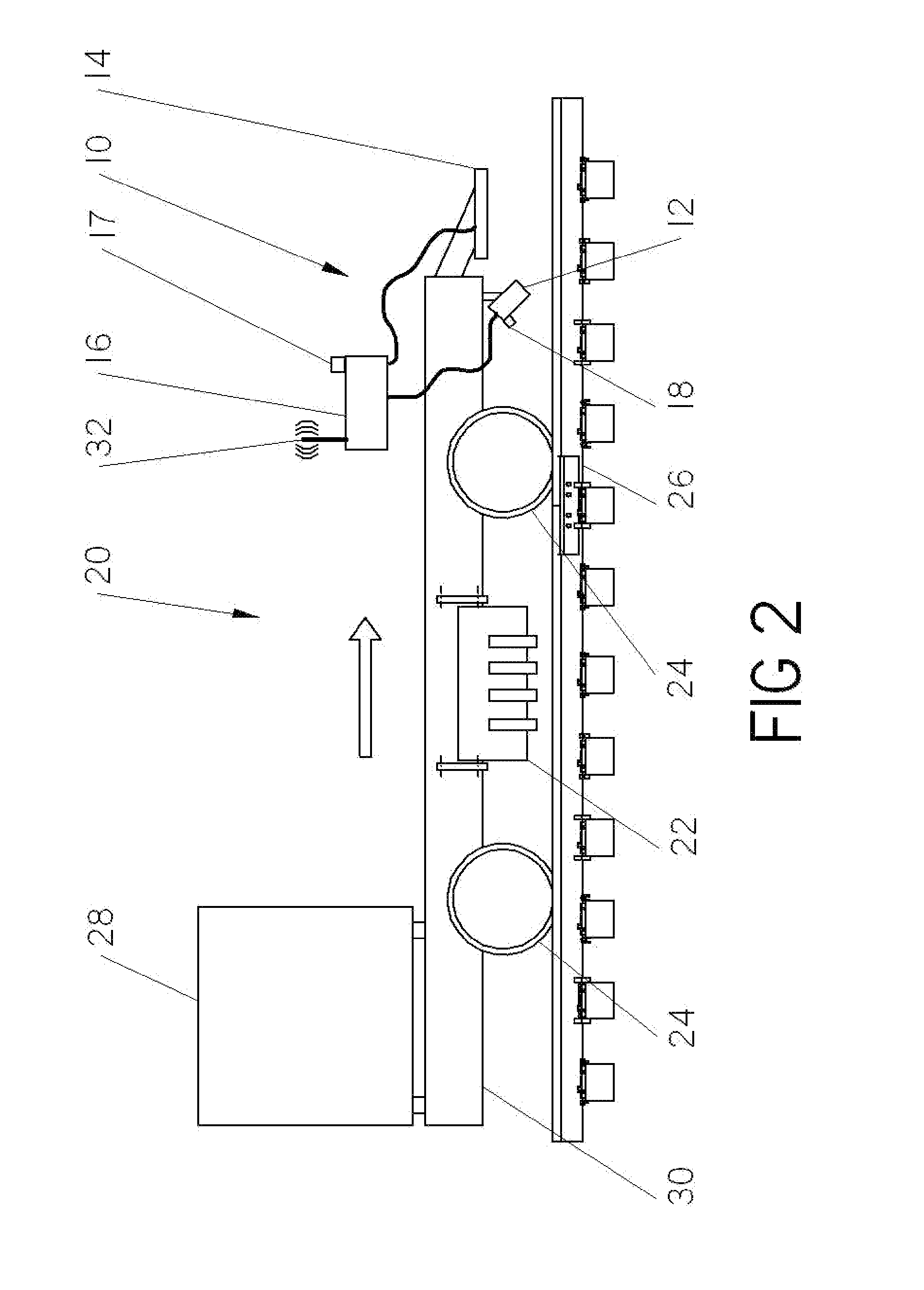Rail vision system
a vision system and rail technology, applied in the field of rail vision systems, can solve the problems of significant property damage and injury to passengers, crew and bystanders, and the impact of railroad components on the safety and reliability of the track and the rail, and achieve the effects of reducing the safety and reliability of the track and rail, reducing the safety of the track, and reducing the safety of the rail
- Summary
- Abstract
- Description
- Claims
- Application Information
AI Technical Summary
Benefits of technology
Problems solved by technology
Method used
Image
Examples
Embodiment Construction
[0028]FIG. 1 shows an illustration of a vision system 10 in accordance with one example embodiment of the present invention that facilitates identification, location and / or inspection of rail components while traveling on the railroad track. Components may include, but are not limited to, ties, tie plates, anchors and spikes.
[0029]As will be discussed below, the vision system 10 utilizes digital images or pictures, computer imaging, and illumination technologies to allow accurate and efficient location and inspection of rail components, with reduced time and effort as compared to conventional methods. It should be initially noted that whereas the present invention is described in detail below as locating spikes, tie plates and anchors, the present invention is not limited thereto, and may be utilized for location and / or inspection of any rail component that can appropriately be inspected using the vision system 10.
[0030]As shown in FIG. 1, the vision system 10 of the illustrated emb...
PUM
 Login to View More
Login to View More Abstract
Description
Claims
Application Information
 Login to View More
Login to View More - R&D
- Intellectual Property
- Life Sciences
- Materials
- Tech Scout
- Unparalleled Data Quality
- Higher Quality Content
- 60% Fewer Hallucinations
Browse by: Latest US Patents, China's latest patents, Technical Efficacy Thesaurus, Application Domain, Technology Topic, Popular Technical Reports.
© 2025 PatSnap. All rights reserved.Legal|Privacy policy|Modern Slavery Act Transparency Statement|Sitemap|About US| Contact US: help@patsnap.com



